Themed collection Renewable carbon and eco-efficient processes

Renewable carbon and eco-efficient processes
François Jerome and Joël Barrault introduce selected highlights of the research presented at the 2nd International Symposium of Green Chemistry: Renewable Carbon and Eco-Efficient Processes (ISGC-2).

Green Chem., 2013,15, 3014-3014
https://doi.org/10.1039/C3GC90036C
Eco-footprint: a new tool for the “Made in Chimex” considered approach
A novel visualization tool called Eco-footprint has been developed to assess sustainability considering both eco-design of processes and manufacturing.

Green Chem., 2014,16, 1139-1148
https://doi.org/10.1039/C3GC42201A
Sulfoxides and sulfones as solvents for the manufacture of alkyl polyglycosides without added catalyst
Reusable biphasic process designed for the fast, selective and catalyst-free synthesis of biobased and biocompatible non-ionic surfactants: alkyl polyglycosides (APG).

Green Chem., 2013,15, 3027-3030
https://doi.org/10.1039/C3GC41059E
Ammoxidation of allyl alcohol – a sustainable route to acrylonitrile
The ammoxidation of allyl alcohol was successfully demonstrated over antimony–iron mixed oxide catalysts with yields up to 84% acrylonitrile.
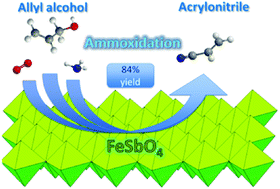
Green Chem., 2013,15, 3015-3019
https://doi.org/10.1039/C3GC41089G
1,2,3-Trimethoxypropane , a glycerol-based solvent with low toxicity: new utilization for the reduction of nitrile , nitro , ester , and acid functional groups with TMDS and a metal catalyst
Directly prepared from glycerol, 1,2,3-Trimethoxypropane showed a low toxicity and was used as solvent in new methodologies for the reduction of organic functions.
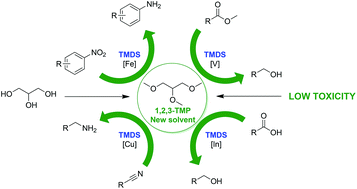
Green Chem., 2013,15, 3020-3026
https://doi.org/10.1039/C3GC41082J
Direct thermocatalytic transformation of pine wood into low oxygenated biofuel
A well dispersed Ru–Cu on the HPA catalyst converts pine wood into biofuel (O = 3.1 wt%) with a yield up to 30 wt%.

Green Chem., 2014,16, 3031-3038
https://doi.org/10.1039/C3GC42596G
Eco-friendly solvents and amphiphilic catalytic polyoxometalate nanoparticles: a winning combination for olefin epoxidation
Amphiphilic catalytic polyoxometalate nanoparticles exhibit high catalytic performances towards olefin epoxidation in eco-friendly solvents such as CPME, 2-MeTHF and AcOMe.
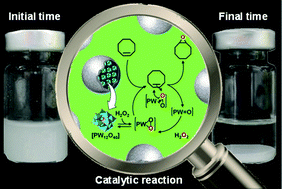
Green Chem., 2014,16, 269-278
https://doi.org/10.1039/C3GC42032A
Depolymerization of organosolv lignin to aromatic compounds over Cu-doped porous metal oxides
Isolated lignin from candlenut nutshells is converted to monomeric catechols with a catalyst based on earth-abundant metals.

Green Chem., 2014,16, 191-196
https://doi.org/10.1039/C3GC41184B
Rosin acid oligomers as precursors of DGEBA-free epoxy resins
Exocyclic epoxidized rosin oligomers were prepared and investigated as liquid-solution epoxy products free of DGEBA.
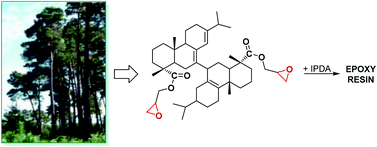
Green Chem., 2013,15, 3091-3098
https://doi.org/10.1039/C3GC41004H
Exergetic sustainability assessment of batch versus continuous wet granulation based pharmaceutical tablet manufacturing: a cohesive analysis at three different levels
Natural resource extraction proved to decline significantly in shifting from batch to continuous pharmaceutical tablet manufacturing.

Green Chem., 2013,15, 3039-3048
https://doi.org/10.1039/C3GC41185K
An efficient and flexible synthesis of model lignin oligomers
A convergent and efficient synthetic method for the flexible, multi-gram preparation of model lignin hexamers and octamers containing three of the most common connectivity motifs found within native lignin, namely β-O-4′, 5-5′ and β-5′.

Green Chem., 2013,15, 3031-3038
https://doi.org/10.1039/C3GC41110A
High activity and switchable selectivity in the synthesis of cyclic and polymeric cyclohexene carbonates with iron amino triphenolate catalysts
Iron(III) amino triphenolate complexes were studied as catalysts for the reaction of CO2 with cyclohexene oxide: high activity and control of the selectivity towards either the cyclic carbonate or the polycarbonate product were achieved.
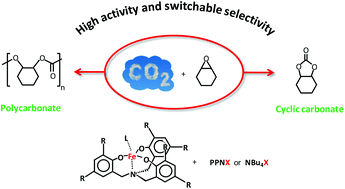
Green Chem., 2013,15, 3083-3090
https://doi.org/10.1039/C3GC41303A
Self-assembly of NiO nanoparticles in lignin -derived mesoporous carbons for supercapacitor applications
Proposed growth mechanism for NiO/C microstructures.

Green Chem., 2013,15, 3057-3063
https://doi.org/10.1039/C3GC41080C
Production of bio-ethene and propene : alternatives for bulk chemicals and polymers
A novel production route for green olefins is proposed and evaluated on pilot plant scale starting from waste triglycerides and free fatty acids.

Green Chem., 2013,15, 3064-3076
https://doi.org/10.1039/C3GC41097H
Ru-based magnetic nanoparticles (MNP) for succinic acid synthesis from levulinic acid
The developed catalytic method for levulinic acid oxidation to succinic acid constitutes an excellent example of catalytic oxidation with oxygen as the oxidant, no organic solvent and a stable Ru(III)-based nanomagnetic recyclable catalyst.

Green Chem., 2013,15, 3077-3082
https://doi.org/10.1039/C3GC41120F
Liquid-phase reforming and hydrodeoxygenation as a two-step route to aromatics from lignin
Different lignins are converted to BTX and monoaromatics of low-oxygen content via consecutive catalytic depolymerization and HDO steps.

Green Chem., 2013,15, 3049-3056
https://doi.org/10.1039/C3GC41150H
About this collection
This web collection contains contributions from the 2nd International Symposium of Green Chemistry: Renewable Carbon and Eco-Efficient Processes (ISGC-2), held in La Rochelle (France) from May 21st to May 24th 2013. François Jerome and Joël Barrault were Guest Editors and they introduce the collection in their Editorial.